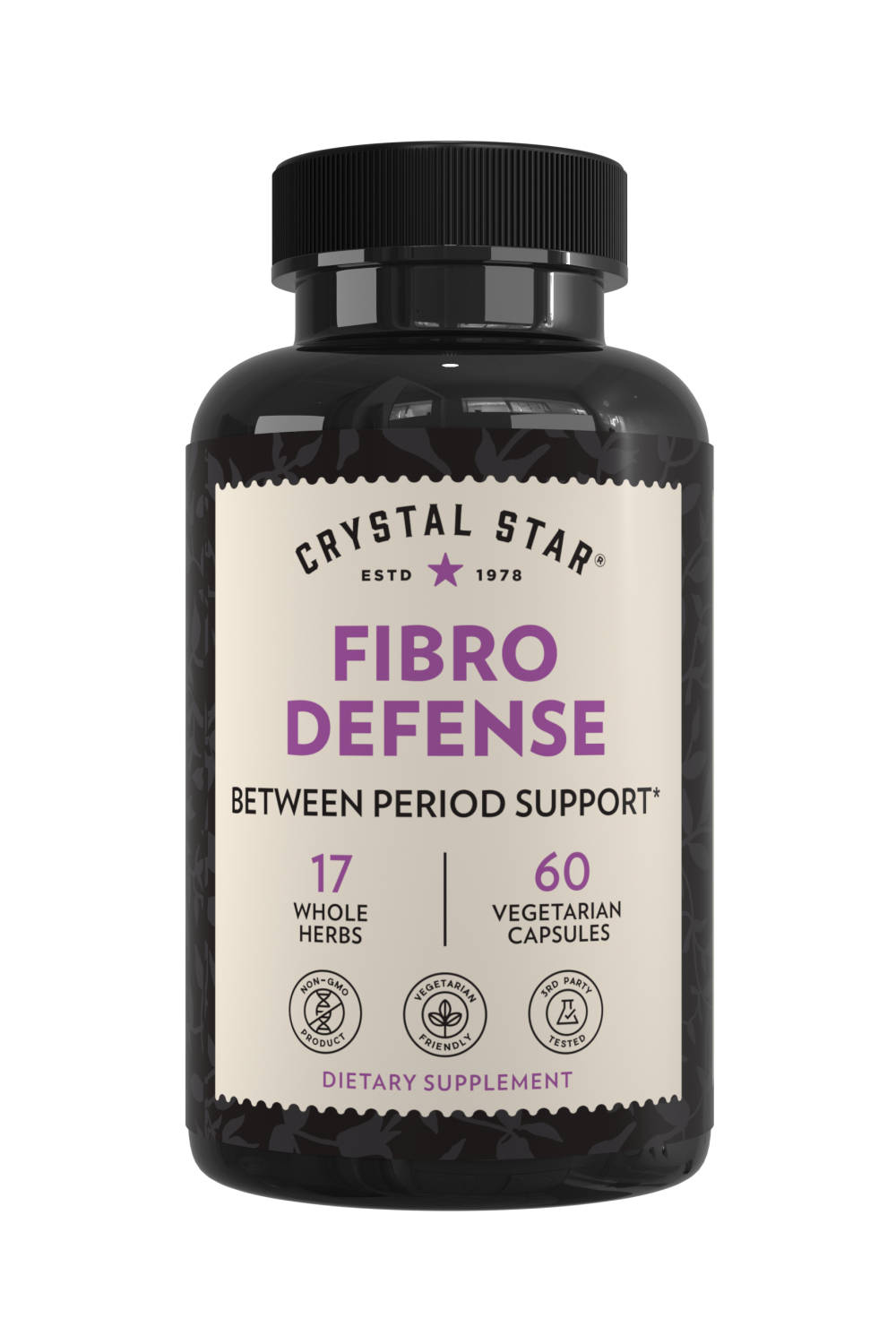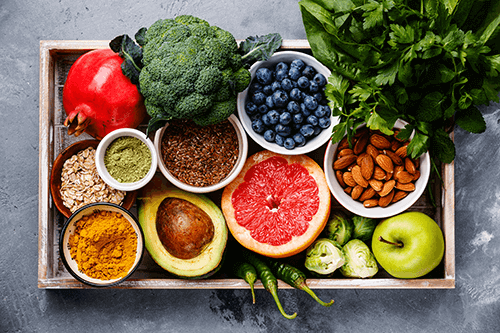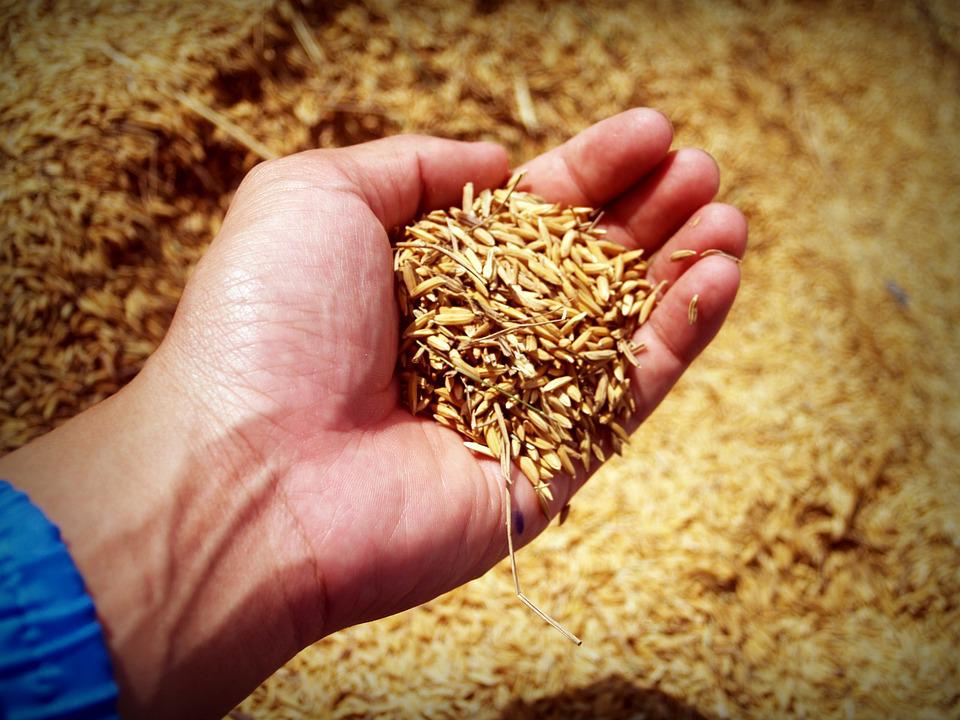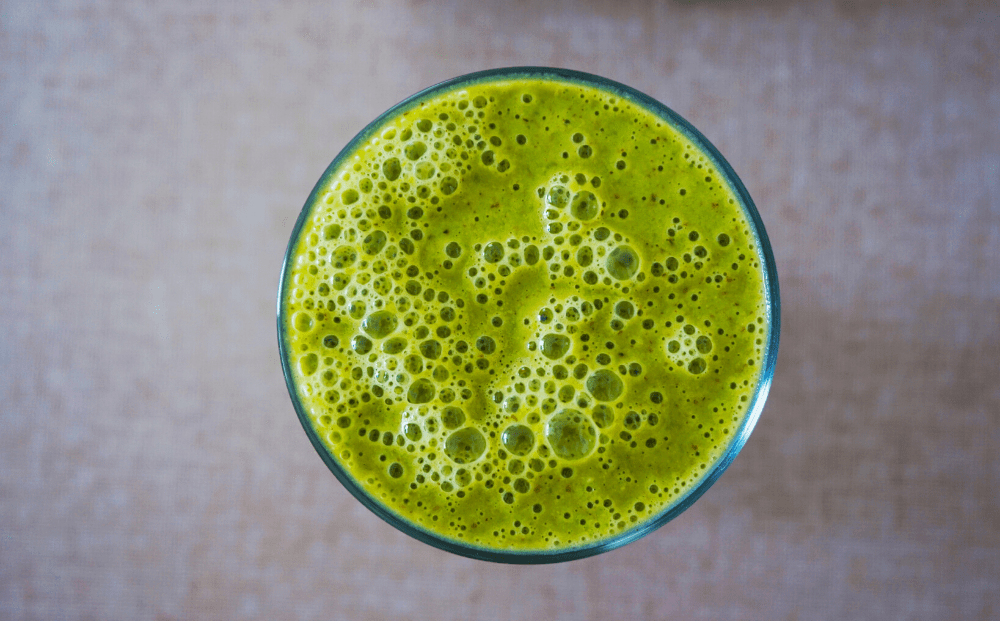
Jan 23, 2020
10 mins read
MODERN HERBALISM: What's the latest research?
Herbal medicine has been around since ancient times, but due to modern science and advanced research techniques, we are learning more and more about just how powerful and effective herbs can be. Science, herbalism, and Western medicine combine more than most people realize.
Did you know that a wide variety of herbs have been researched and used in mainstream Western medicine? Many are still being used today, proving that plants are powerful medicinal tools.
Read on to see which herbs show up in prescription and over-the-counter medicines and which are making headlines with their newly-discovered benefits.
And for more information about plant-powered remedies, check out Grow your own herbal medicine cabinet? Yes, you can.
Star Anise contains a constituent called shikimic acid. This compound is collected from the plant and converted by scientists into a substance called oseltamivir phosphate, commonly called Tamiflu®. Researchers have also discovered this compound in pine needles and unripe sweet gum seeds.[1]
The bark of the white willow tree contains a substance called salicin. Salicin is commonly used to create the popular painkiller and fever reducer Aspirin.
Foxglove is a lovely ornamental plant with tube-like flowers growing up the stem. However, several species of this plant are used to create heart medications, due to their digitoxin and digoxin content.
Both of these constituents are cardiac glycosides. Cardiac glycosides are compounds that work to increase the output of the heart while decreasing the rate of contractions. These glycosides are reconstituted into heart medication in a lab, but the plant in its original form should never be used to treat a heart condition since it can be toxic.
The poppy plant, specifically the species Papaver somniferum, is used to create codeine, an opiate used to treat pain and coughing. Historically, the alkaloid in this plant has a not-so-sterling reputation because of its opiate content. Alkaloids are naturally occurring compounds found in some plants. Some are toxic, while others have been used medicinally, depending on the plant.
When it is reformulated in a lab, the opium alkaloid can be used in moderation as prescribed by a medical professional, but this powerful plant should be left alone otherwise.
The opium poppy species used to create codeine is not the same plant as the California poppy, which is a therapeutic plant used for its gentle,sedative properties. California poppy is not dangerous and does not contain any opium.
Maca root, cultivated in the high plateaus of the Andes Mountains, is a member of the mustard family. Herbalists have been suggesting maca root to treat infertility in women for years. It’s thought to help increase libido, balance hormones, and boost energy levels. Now, new research is showing it to be promising for men as well.
In a 2019 study conducted in Japan, researchers discovered that maca root improved sperm motility and acrosome reaction rates in both humans, as well as the mice studied.[2] This means that it may be a promising treatment for male infertility, especially when infertility is the result of low sperm motility.
Milk thistle has been used for years to promote healthy liver function, lower cholesterol, and even treat diabetes. However, a recent study by the Dermatology Clinic of Shahid Faghihi Hospital in Iran has found that milk thistle may also be an effective tool in treating a skin disorder called vitiligo.
Vitiligo affects the skin by causing a reduction in a pigment called melanin. This pigment is responsible for skin color, as well as eye and hair color. Those with this skin disorder experience patches of skin that are much lighter than the surrounding skin. These patches can appear all over the body.
This double-blind, randomized trial separated patients with vitiligo into two groups. One group was exposed to phototherapy, as well as milk thistle’s active compound, silymarin. The other group was given phototherapy and a placebo. After the study, the patients were carefully evaluated.
The results of the study (published in April 2019) showed that the group given silymarin experienced more of a reduction in vitiligo, demonstrated by both a reduction in overall patches, as well as improved skin repigmentation.[3]
It’s been known for some time that lavender is effective in addressing a variety of ailments. This wonderfully aromatic plant has been shown to help the body cope with stress and anxiety, as well as heal minor burns and skin inflammation. Now research is showing lavender to be effective at normalizing high blood pressure.
A 2019 study by the University of California, Irvine revealed exactly how lavender and other hypotensive (blood-pressure-lowering) herbs like chamomile and fennel work. When these plants activate what’s known as the KCNQ5-selective potassium channel in blood vessels, the smooth muscles lining the blood vessels relax, making it easier for blood to pass through.[4]
According to the study, lavender (Lavandula angustifolia) has the strongest blood-pressure lowering qualities when compared to fennel and chamomile. This discovery is a promising opportunity for the development of new, alternative blood pressure medications.
Amber Robinson is an AHG Registered Herbalist, NAHA Level 2 Professional Aromatherapist, author, and founder of The Bitter Herb Academy.
Plants in prescription and OTC medications
 Star anise and Tamiflu®
Star anise and Tamiflu®
Star Anise contains a constituent called shikimic acid. This compound is collected from the plant and converted by scientists into a substance called oseltamivir phosphate, commonly called Tamiflu®. Researchers have also discovered this compound in pine needles and unripe sweet gum seeds.[1]
 White willow and aspirin
White willow and aspirin
The bark of the white willow tree contains a substance called salicin. Salicin is commonly used to create the popular painkiller and fever reducer Aspirin.
 Foxglove and heart medication
Foxglove and heart medication
Foxglove is a lovely ornamental plant with tube-like flowers growing up the stem. However, several species of this plant are used to create heart medications, due to their digitoxin and digoxin content.
Both of these constituents are cardiac glycosides. Cardiac glycosides are compounds that work to increase the output of the heart while decreasing the rate of contractions. These glycosides are reconstituted into heart medication in a lab, but the plant in its original form should never be used to treat a heart condition since it can be toxic.
 Poppy and codeine
Poppy and codeine
The poppy plant, specifically the species Papaver somniferum, is used to create codeine, an opiate used to treat pain and coughing. Historically, the alkaloid in this plant has a not-so-sterling reputation because of its opiate content. Alkaloids are naturally occurring compounds found in some plants. Some are toxic, while others have been used medicinally, depending on the plant.
When it is reformulated in a lab, the opium alkaloid can be used in moderation as prescribed by a medical professional, but this powerful plant should be left alone otherwise.
The opium poppy species used to create codeine is not the same plant as the California poppy, which is a therapeutic plant used for its gentle,sedative properties. California poppy is not dangerous and does not contain any opium.
Some of the latest discoveries in plant-based medicine.
Some new research continues to show that herbalism has a strong and valid place among therapeutic healing methods. From fertility to high blood pressure, current research is confirming what many herbalists already knew: plant-based medicine is effective!
 Maca may boost fertility for both women and men
Maca may boost fertility for both women and men
Maca root, cultivated in the high plateaus of the Andes Mountains, is a member of the mustard family. Herbalists have been suggesting maca root to treat infertility in women for years. It’s thought to help increase libido, balance hormones, and boost energy levels. Now, new research is showing it to be promising for men as well.
In a 2019 study conducted in Japan, researchers discovered that maca root improved sperm motility and acrosome reaction rates in both humans, as well as the mice studied.[2] This means that it may be a promising treatment for male infertility, especially when infertility is the result of low sperm motility.
How can you take maca?
Maca can be taken in a variety of forms depending on your specific needs. It can be taken in capsules for those who wish to get all the benefits without any unpleasant taste (though many people describe maca’s flavor as earthy, nutty, and slightly sweet). Maca is also available in tincture form. A tincture is a liquid extract of a plant using grain alcohol or vegetable glycerin (a preparation made with vegetable glycerin is often called a glycerite) as a solvent. Tinctures are taken orally, usually under the tongue. Maca root powder is also available in powder form for use in smoothies. It has a taste similar to yams, so it tends to pair well with fruits and vegetables in a healthy drink. When it comes to dosage, maca is best consumed in dosages not exceeding three grams daily. Taking maca for no more than four months at a time is best, as there isn’t much information available on long term usage of this plant.Does maca have side effects?
When taken as directed, maca usually has little side effects. That said, there haven’t been extensive studies on the safety of maca when used during pregnancy and lactation, so it is always best to err on the side of caution and avoid maca during this time. Since maca can affect hormones, those with hormone-sensitive conditions and cancers should avoid using maca until it’s proven safe in those circumstances.
 Milk thistle: more than just liver health
Milk thistle: more than just liver health
Milk thistle has been used for years to promote healthy liver function, lower cholesterol, and even treat diabetes. However, a recent study by the Dermatology Clinic of Shahid Faghihi Hospital in Iran has found that milk thistle may also be an effective tool in treating a skin disorder called vitiligo.
Vitiligo affects the skin by causing a reduction in a pigment called melanin. This pigment is responsible for skin color, as well as eye and hair color. Those with this skin disorder experience patches of skin that are much lighter than the surrounding skin. These patches can appear all over the body.
This double-blind, randomized trial separated patients with vitiligo into two groups. One group was exposed to phototherapy, as well as milk thistle’s active compound, silymarin. The other group was given phototherapy and a placebo. After the study, the patients were carefully evaluated.
The results of the study (published in April 2019) showed that the group given silymarin experienced more of a reduction in vitiligo, demonstrated by both a reduction in overall patches, as well as improved skin repigmentation.[3]
How can you take milk thistle?
Milk thistle is available in capsule and tincture forms. Milk thistle doesn’t taste great, so many people prefer to take this plant in capsule form. If you wish to take milk thistle, make sure you are buying your supplements from a reputable company. Some indicators of a reputable company include third-party product quality testing, products free of fillers, and companies that steer clear of genetically modified organisms in their products. Dosages vary with milk thistle, depending on what form you are consuming. Researchers have discovered that milk thistle absorbs into the body better when it is paired with a substance called phosphatidylcholine. Phosphatidylcholine is a natural substance found in eggs and a variety of edible plants, including soybeans. Some supplements actually contain this ingredient to maximize milk thistle’s absorption. When taking milk thistle with phosphatidylcholine, a proper dosage is 100-200 milligrams up to twice daily. When taking milk thistle without this extra ingredient, a safe dosage is 200 milligrams up to three times daily.Does milk thistle have side effects?
There have been side effects reported from this supplement that include drops in blood pressure, allergic reactions, stomach upset, and loose stools. However, if it is taken according to the indicated dosage on the label, the chance of any side effects is low. Because of a lack of safety research, it is best to avoid milk thistle during pregnancy and lactation. Milk thistle may also interact with diazepam (a benzodiazepine) and warfarin (a blood thinner), so ask your healthcare provider before beginning a supplement regimen.
 Can lavender lower blood pressure?
Can lavender lower blood pressure?
It’s been known for some time that lavender is effective in addressing a variety of ailments. This wonderfully aromatic plant has been shown to help the body cope with stress and anxiety, as well as heal minor burns and skin inflammation. Now research is showing lavender to be effective at normalizing high blood pressure.
A 2019 study by the University of California, Irvine revealed exactly how lavender and other hypotensive (blood-pressure-lowering) herbs like chamomile and fennel work. When these plants activate what’s known as the KCNQ5-selective potassium channel in blood vessels, the smooth muscles lining the blood vessels relax, making it easier for blood to pass through.[4]
According to the study, lavender (Lavandula angustifolia) has the strongest blood-pressure lowering qualities when compared to fennel and chamomile. This discovery is a promising opportunity for the development of new, alternative blood pressure medications.
How can you take lavender?
Lavender is a versatile plant and can be enjoyed in a variety of ways. One easy way to use lavender is by infusing the buds in hot water to make tea. Other ingestible forms include extracts, such as tinctures and softgel capsules, or powdered whole lavender in capsules. When consuming lavender in tincture form, stick to a dosage of two to four milliliters, three times daily. When consuming lavender in tea, you can safely drink three to four cups a day. Capsules of dried lavender herb can be taken in 500 milligram dosages, up to twice daily. For softgel extract capsules, taking up to 80 milligrams daily is sufficient. Lavender essential oil also works well to help calm and soothe the mind and body (for more on using essential oils at home, check out What are essential oils and how can you use them?). If you are using lavender essential oil topically, start with a one percent dilution, which constitutes one drop of lavender per teaspoon of carrier oil.Does lavender have side effects?
When used properly, lavender is generally safe. However, if you choose to use lavender essential oil, make sure to dilute it properly and avoid ingestion. Internal consumption of lavender essential oil can be toxic because essential oils are highly concentrated and potent. Lavender has also been reported to potentially interact with some blood-thinning medications if it is taken at the same time. Both ingestion and transdermal absorption of lavender essential oil may cause complications under these circumstances. As with many plant-based products, lavender can cause allergic reactions, especially if consumed in amounts greater than specified on the product label. Because lavender is such an aromatic plant, it is thought to trigger allergies in those sensitive to various kinds of pollen. Use this plant with caution if you are allergic to other aromatic pollinating plants.A bright future for therapeutic herbalism
In summary, medicinal plants already have an important place in western medicine, and are used to create many medications on the market today. Researchers have discovered maca root’s ability to support male fertility, milk thistle’s potential for addressing vitiligo, and lavender’s blood-pressure-lowering properties. As interest in the medicinal actions of plants continues to grow, more studies will emerge proving the effectiveness of the plants we use and adore. In addition, the divide between Western medicine and contemporary herbalism will continue to close as new research bridges the gap between them to create new medications, treatments, and therapies. And for more information on how herbs can support a healthy lifestyle at home, check out Grow your own herbal medicine cabinet? Yes, you can.Amber Robinson is an AHG Registered Herbalist, NAHA Level 2 Professional Aromatherapist, author, and founder of The Bitter Herb Academy.








